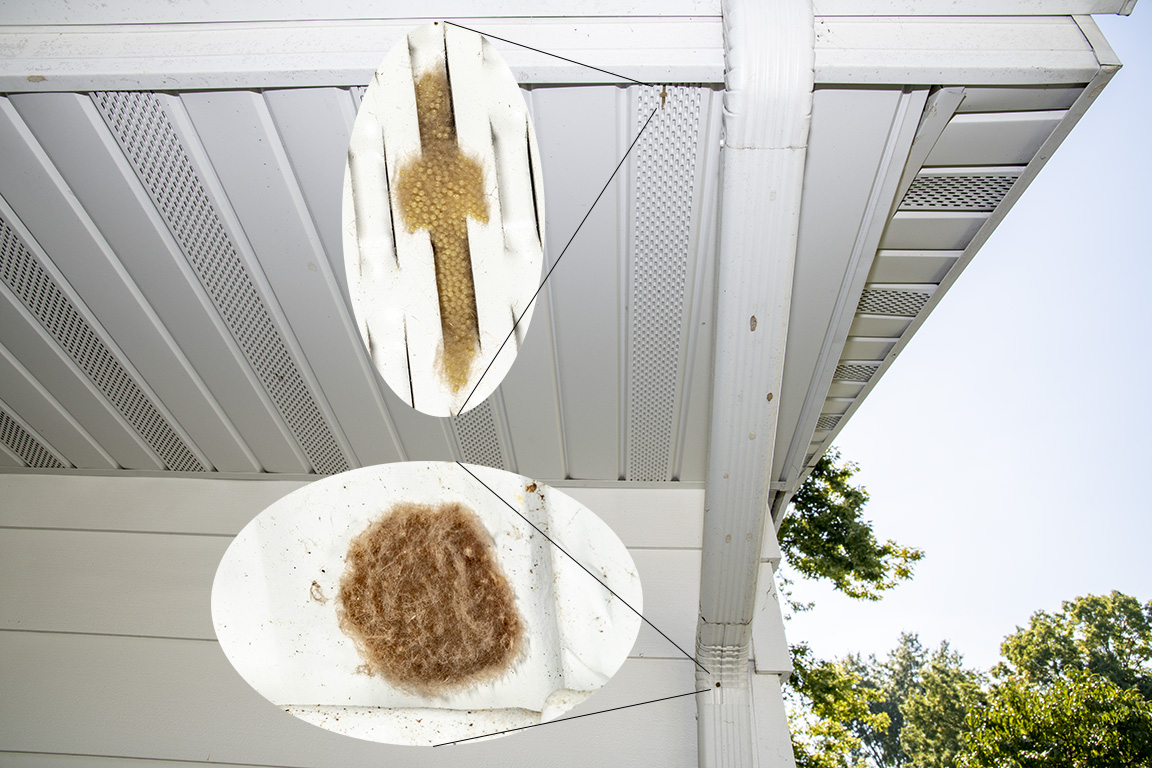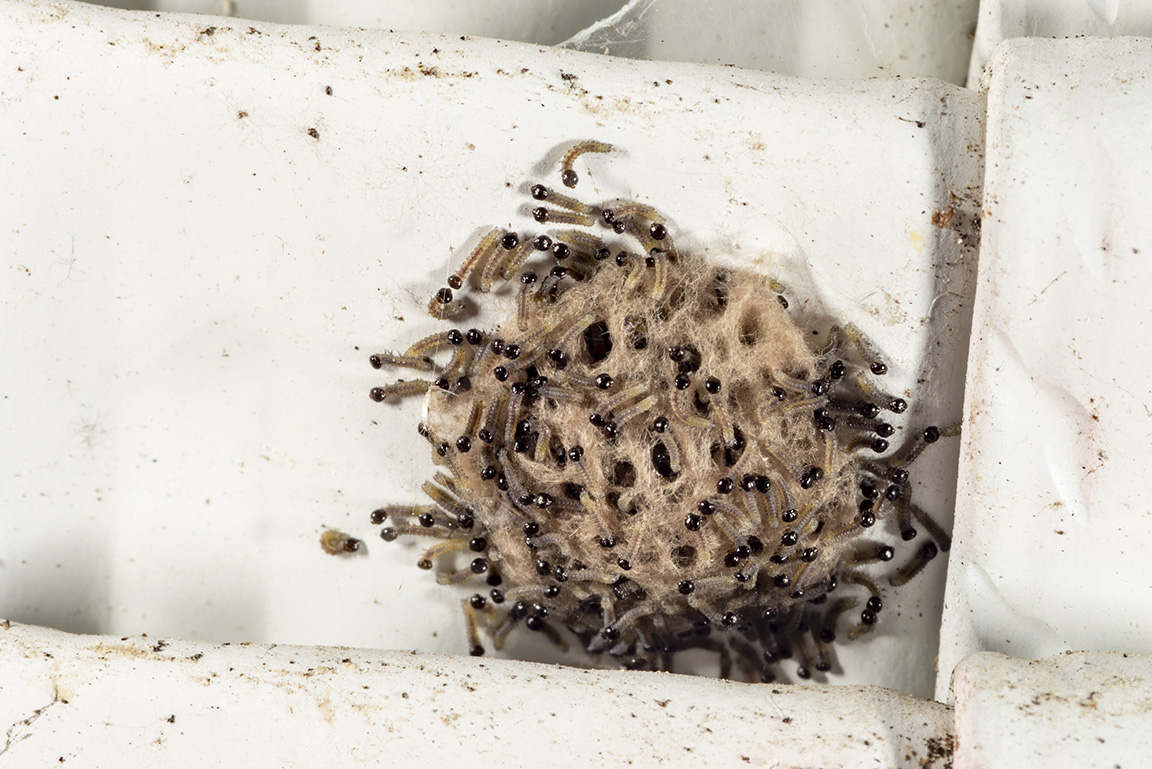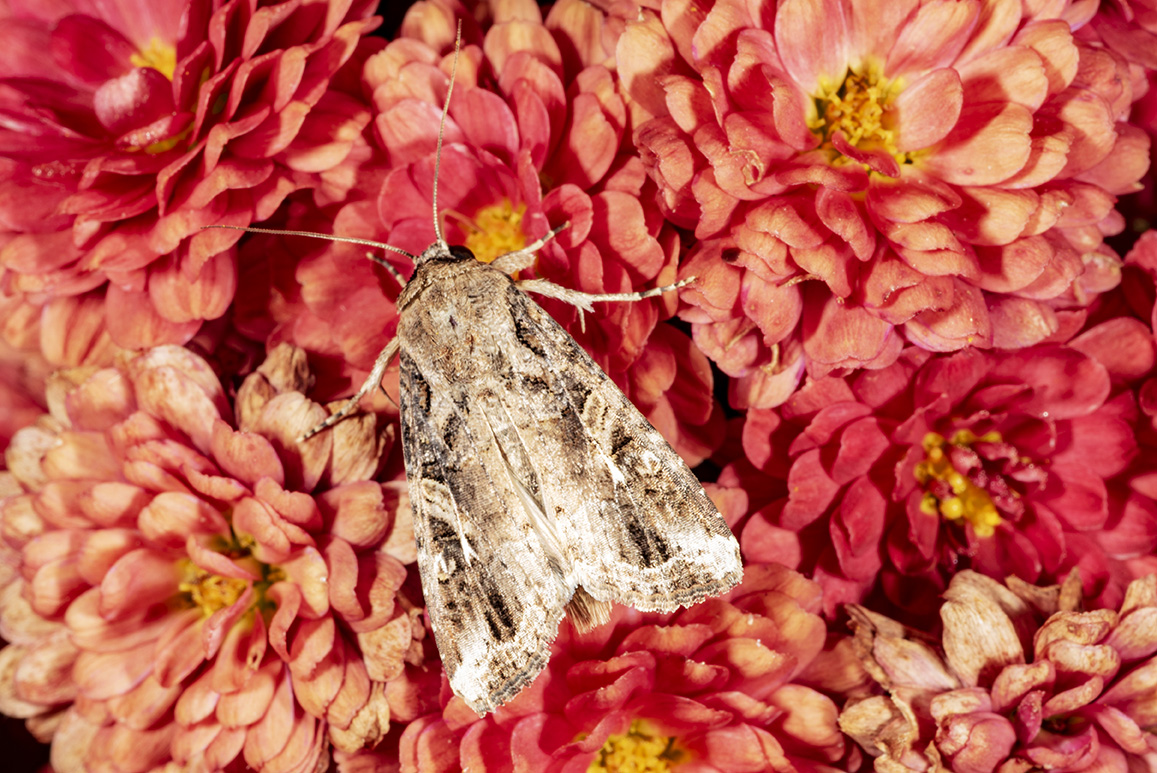Astute observers have recently reported mysterious egg masses on the outside of their homes, including siding, gutters, soffits, facia, and porch ceiling fan blades! Not just in the rural areas, but city homes as well. We have been able to experience this first-hand, making it easy to document and identify. No surprise, these are fall armyworm – part of the last remnants of the great outbreak of 2021.

Fresh (enlarged inset) fall armyworm egg masses on my home, multiple remnants of hatched egg masses can also be seen, photo taken on September 30. (Photo Credit: John Obermeyer)
Fall armyworm is a tropical/sub-tropical species, and moths arrive in Indiana from Southeast/Gulf States anytime weather systems from that area move our way. We certainly have had such weather events from hurricanes/tropical storms this season. Currently, Indiana is under a huge low/high pressure system tussle, this “spin” is not only sending a continuous week of spotty showers, but likely a new flush of moths as well. In other words, there aren’t distinct generations of fall armyworm in the Midwest. Moths, egg masses, and larvae active now may be the progeny of previous arrivals that caused damage to our crops, or some may be new arrivals. The good news…this species is not cold-hardy, and will die during our first stretch of cold nights, even prior to a hard freeze.

One week later, the egg mass on the gutter was alive with hatching larvae. Below are still flowering roses…they will be watched! (Photo Credit: John Obermeyer)

This male fall armyworm moth was nectar feeding on mums at night in my yard, photo taken on September 29. Also feeding on the mums were adults of the yellow-striped armyworm and corn earworm (not shown). (Photo Credit: John Obermeyer)
This late fall armyworm “excitement” is reminiscent of mid-October 2007. That year, after harvest of corn and soybean, the fields became green with volunteer seedlings. There were many jokes about double-crop corn, as some fields in southern Indiana reached knee-high before frost. The point is, fall armyworm found this “crop” to their liking. We know the end of that story, eventually it did freeze, and the fall armyworm with the “double-crop” died.

Volunteer corn, October 15, 2007, near Purdue campus, being riddled by early-instar fall armyworm larvae. (Photo Credit: John Obermeyer)
Currently (October 7), meteorologists indicate there is no immediate freeze in sight…but we know it is eventually coming. Even before freezing temps hit, cool temperatures (50’s and 60’s) at night are not favorable for fall armyworm growth and development. They won’t die, but they will not thrive, feed and grow rapidly. With that said, it certainly would be worth a look, before that time, in crops that are still green, e.g., alfalfa, cover, etc. While it is possible, it is more likely that this late fall armyworm activity and delayed season will not create a “perfect storm” for still growing crops, but will wind up being an entomological curiosity much like 2007.
Happy scouting!


